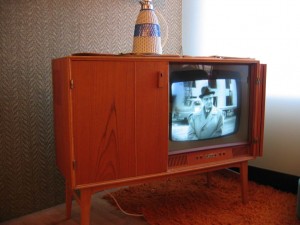
So the nag of the north, David Walsh, is out of business. For 15 years his Minneapolis-based non-profit has been calling out the media for propagating material that corrupts children. He once got the video game Grand Theft Auto recalled. He believed that screen violence corrupted our youth. Don’t let the door hit you on the way out.
I am, actually, not completely negative about his mission. He was not nearly as bizarre and sanctimonious as L. Brent Bozell’s Parents Television Council, which decried the liberal porn-peddlers in Hollywood for ruining “every last acre of innocence”. From the PTC’s mission statement:
Television is the most powerful medium in the world. It can be a wonderful way to educate, inspire, and entertain America’s children. Sadly it’s doing the opposite and undermining the positive values parents are trying to instill in their young ones.
This is, of course, horseshit. Television, outside of Sesame Street and a few other islands of intelligence, was never a great way to “educate, inspire, and entertain America’s children.” Many people have made the case better than I, but it bears repeating: How about we don’t let kids watch so much TV? That way, the kids don’t grow up to be idiots, and nobody gets to tell the adults that they have to watch the morally virtuous Joan of Arcadia instead of the nihilistic Coupling. And the rights of stoners and others who want to watch morally suspect shows during the day remain intact. Walsh, to his credit, didn’t want kids to watch TV. But he flirted with pseudo-science in his rush to raise the alarm about kids and the media.
It’s a weird fight. On the one hand, you have the well-funded entertainment industry protecting its turf. On the other hand, you have the news industry, which is all too ready to amplify the message of Walsh and the other Cassandras harping about the dangers of media. It’s the kind of showdown that you wish both sides could lose.

 Because I have too much free time, and because my imagination tends to work in the weirdest of ways, I often dream up nightmare scenarios involving myself and my daughter. The most common one goes thus:
Because I have too much free time, and because my imagination tends to work in the weirdest of ways, I often dream up nightmare scenarios involving myself and my daughter. The most common one goes thus: There was one thing I wanted to do last month in Berlin after I was done with all the smoking, drinking and
There was one thing I wanted to do last month in Berlin after I was done with all the smoking, drinking and 